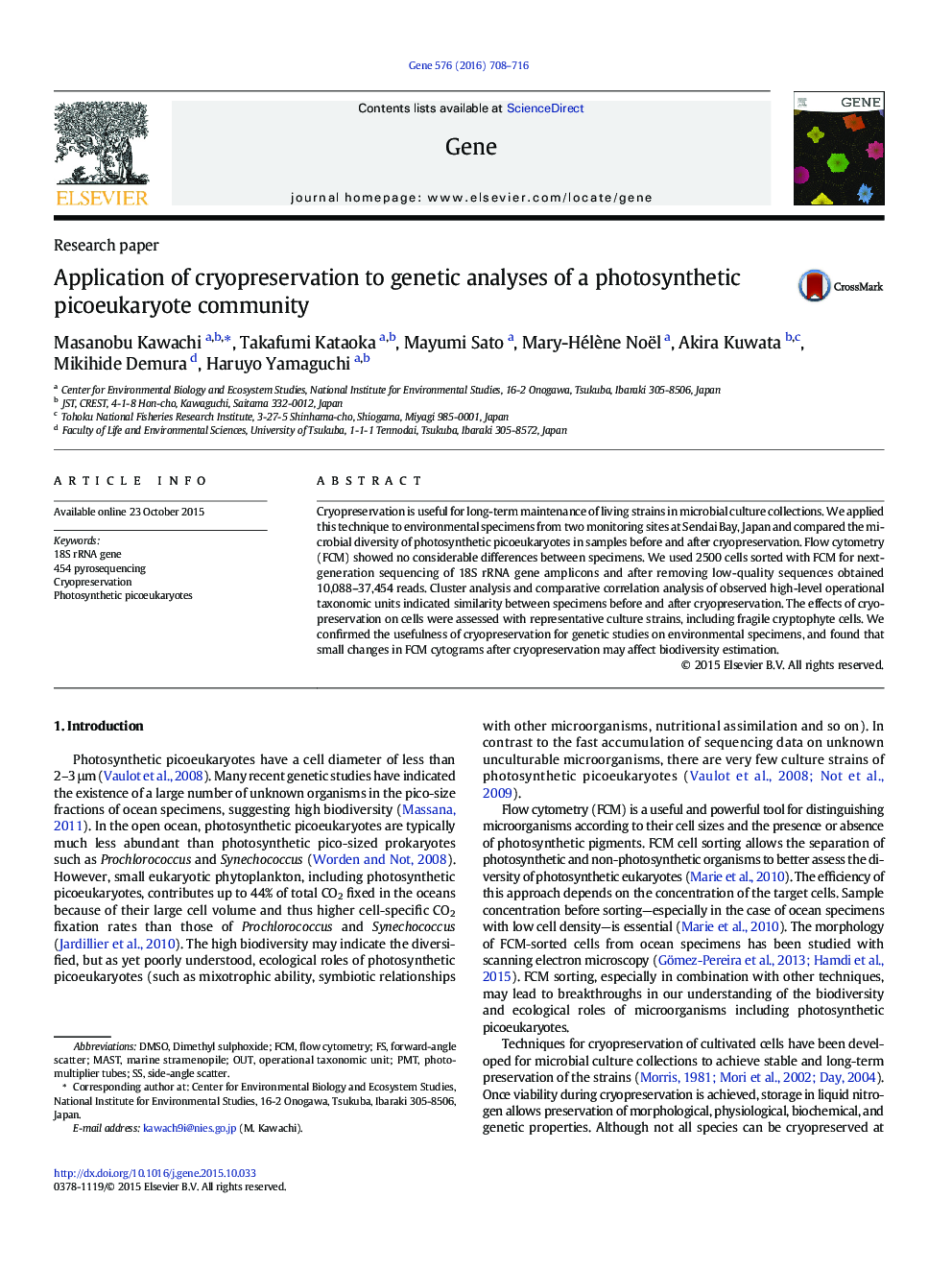| Article ID | Journal | Published Year | Pages | File Type |
|---|---|---|---|---|
| 5905187 | Gene | 2016 | 9 Pages |
â¢Picophytoplankton biodiversity was surveyed with NGS of 18S rRNA gene amplicons.â¢Flow cytometry cytograms were nearly identical before and after sample cryopreservation.â¢Composition of major OTUs was similar before and after cryopreservation.â¢Effect of cryopreservation was confirmed with culture strains, including fragile cryptophyte cells.
Cryopreservation is useful for long-term maintenance of living strains in microbial culture collections. We applied this technique to environmental specimens from two monitoring sites at Sendai Bay, Japan and compared the microbial diversity of photosynthetic picoeukaryotes in samples before and after cryopreservation. Flow cytometry (FCM) showed no considerable differences between specimens. We used 2500 cells sorted with FCM for next-generation sequencing of 18S rRNA gene amplicons and after removing low-quality sequences obtained 10,088-37,454 reads. Cluster analysis and comparative correlation analysis of observed high-level operational taxonomic units indicated similarity between specimens before and after cryopreservation. The effects of cryopreservation on cells were assessed with representative culture strains, including fragile cryptophyte cells. We confirmed the usefulness of cryopreservation for genetic studies on environmental specimens, and found that small changes in FCM cytograms after cryopreservation may affect biodiversity estimation.
